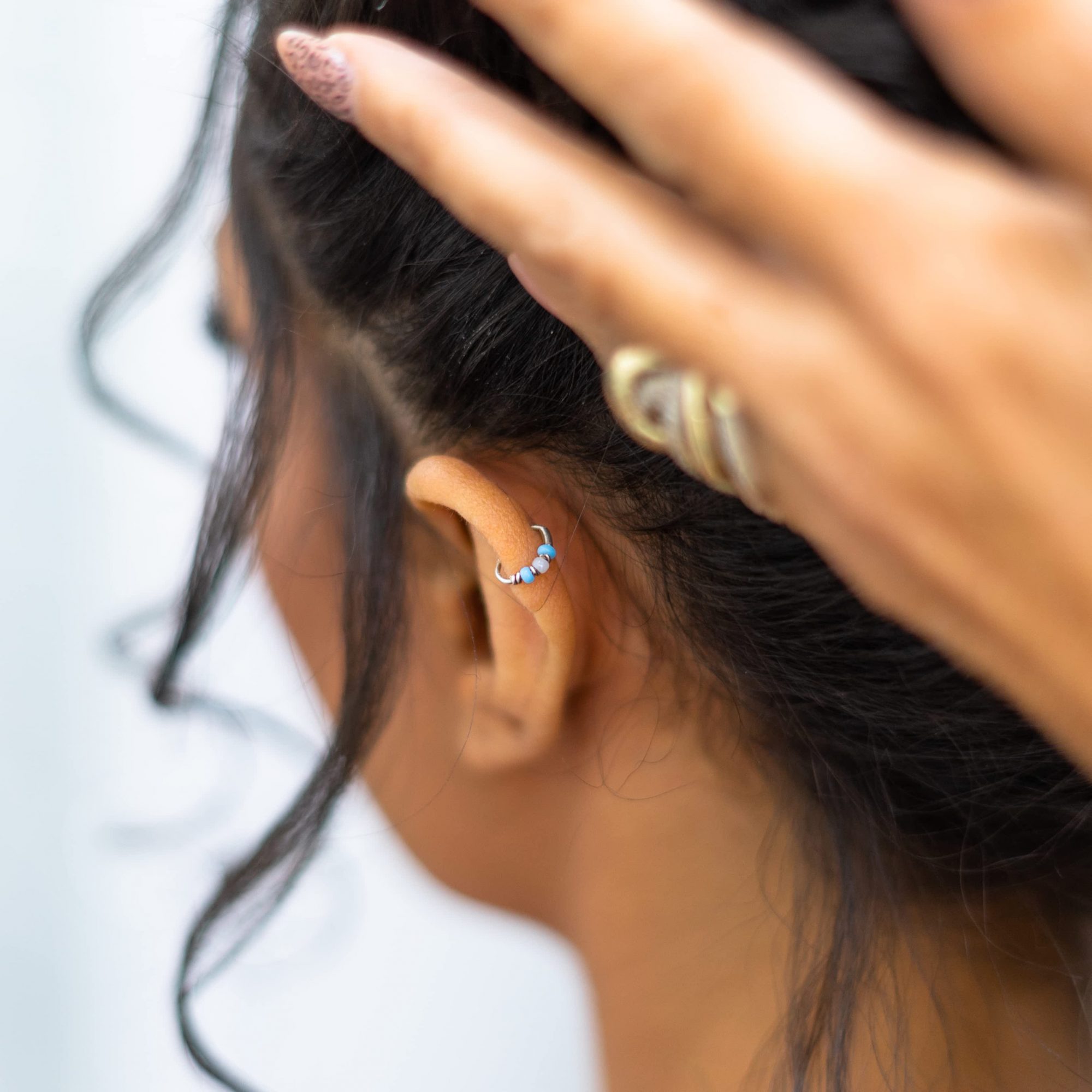
- POPSUGAR Australia
- Beauty
- So, You Want to Get a Septum Piercing? Here’s What a Pro Wants You to Know First
So, You Want to Get a Septum Piercing? Here’s What a Pro Wants You to Know First

Like with tattoos, when it comes to getting piercings, choosing an area of your body where you want your jewellery to live is only half the battle. There are several areas on the ears – conch, rook, tragus, to name a few – that make great real estate for new bling, but if you’re looking for something a little more unique (but not completely uncommon), you can opt for a nose piercing, or a septum piercing to be more specific.
Septum piercings aren’t new by any means, but when it comes to their overall look, they differ quite greatly from the standard nose piercings that typically sit on either nostril. While these piercings are wildly popular for how effortlessly cool they look, there are still a few details worth knowing about them beforehand should you decide to book an appointment to get one.
Ahead, we spoke to a professional piercer to get the lowdown on everything you should know before getting a septum piercing.
What Is a Septum Piercing?
A septum piercing is . . . well . . . exactly what it sounds like: it’s a piercing in your septum, the thin piece of tissue in your nose that sits in between your left and right nostrils. “It goes through the very front tip of your nose,” Tom Gottschalk, piercer at Dorje Adornments in Rochester, New York, told POPSUGAR. “There’s a little bit of skin up there called the ‘sweet spot,’ and we try to get it through the thinnest area of the nose and make it nice and straight.”
Do Septum Piercings Hurt?
Pain is relative, and what might be extremely painful to you may only be moderately uncomfortable to someone else with a varied pain tolerance. As it goes with any piercing regardless of its location or the person getting it, a little pain should always be expected – after all, you are puncturing your skin.
“That’s a question that I don’t usually answer for people because it’s all different levels of pain,” Gottschalk said. “But there’s no piercing that doesn’t hurt.”
If potential pain is what worries you the most, experts say you can take a Tylenol or acetaminophen before your appointment to help minimize it.
How Should I Take Care of My Septum Piercing?
The aftercare process for your new septum piercing is similar to the aftercare process you’d follow for just about any piercing, but keep in mind that you may be given different instructions based on what professional you allow to do the job. Gottschalk typically recommends his septum clients leave their piercings alone, with the obvious exception of cleaning them regularly.
“With this piercing, the less you do to it, the better,” he said. “I recommend that people spray it with saline twice a day and then forget that it exists. Don’t touch it, don’t rotate it, don’t move it.”
He continued, “A big misconception about piercings is that you’re supposed to spin them, but that’s not true. It’ll only do a lot of harm instead of helping it. Any time you’re touching a piercing, it’s always going to be a bad thing.”
How Long Do Septum Piercings Take to Heal
According to Gottschalk, you should expect for a septum piercing to heal within four to six months. You’ll also likely experience a bit of soreness or tenderness in the area in the days following your appointment.
When Can I Change My Septum Ring?
How often you switch out your jewelry is up to you, but you should wait until your piercing is at least fully healed. “I usually recommend going to a professional to have it changed for at least your first time,” Gottschalk said. “You should have them show you how to do it so that you can then do it safely.”


